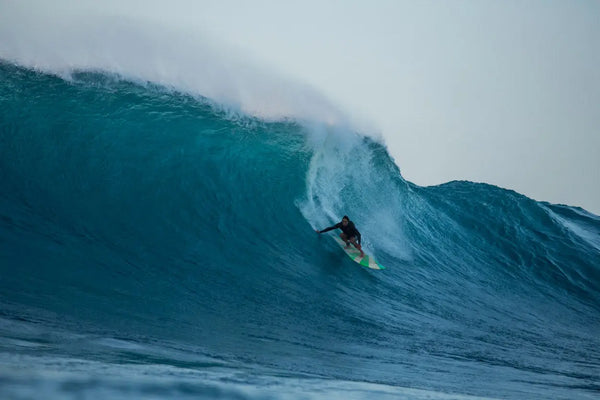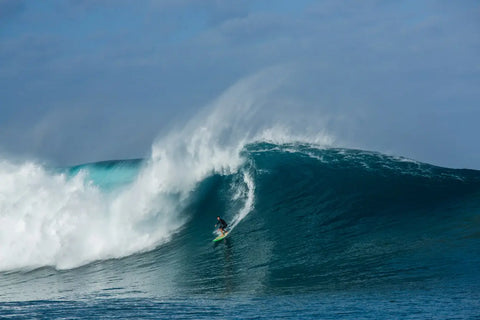How to Prepare for a Big Swell - Matt Rott

By now you might have heard that the Eddie is on yellow alert, and that’s because the biggest swell in the past year is currently bearing down on Hawaii. Whether or not the Eddie ends up running, Monday and Tuesday promise to be exciting days in the water, with a 16 foot at 18 seconds swell filling in Monday night and peaking early Tuesday morning. Waimea should be 18- to 20-foot+, and the outer reefs even bigger—and as of now we have stellar ESE (offshore) winds forecasted for the entire swell.
While most of us might not be planning to paddle out this week, there are a handful of guys (and girls!) who are quietly gearing up for a heavy couple of days in the ocean. Hawaiian South Shore’s resident writer/adventurer/big wave enthusiast Matt Rott checked in today to pick up some new big-wave leashes, and I asked him to explain to us how he prepares for XXL swells.

Obviously most of the preparation for big waves should have been done long before a swell pops up on the forecast. All summer we surf as much as possible, and cross-train with yoga, body work, apnea exercises, and a variety of different sports like mountain biking, running, paddling, and rock climbing. By the time a swell this big is on its way to Hawaii, I am hopefully healthy, strong, and confident. If I’m not, then I probably shouldn’t be paddling out.
The night before a big swell, I make sure that all of my gear is in order. There are already enough dangers and variables in the water that I can’t control, so I try to control all factors that I can, and that includes equipment. I check everything to make sure that it is in good shape, then lay out everything that I’ll be using. I check my gun and fins, and then check my backup board and fins. Then I lay out two big-wave leashes, my impact suit/springsuit, and my inflatable vest. With the inflatable vest, I check to make sure that all four canisters are new and un-punctured, and that the bladder in the vest still holds air. Then I lay out sunscreen, wax, water, and snacks. I want to have everything accounted for and in one place, so that I don’t have to think about anything when I wake up.
Next, I check in with my paddle partner and safety team, to makes sure the ski is ready and that they have all of their gear in place. They have all gone through the same checklist as me, but we like to double-check each other to make sure. Because we depend on each other for safety, we want to make sure that everything is copacetic and that there’s no unexpected factor that could endanger one of us, since that would be extension endanger all of us. We also review safety protocol, hand signals, and rescue strategies, just to make sure that everyone is on the same page.
After making sure that all of my gear is set, I am more confident and feel less stressed and rushed, which allows me to relax and prepare for the swell better. I usually do an hour of yoga, then 30 minutes of breathing exercises to wind down for the evening. I like to finish the breathing exercises with a five-minute hold, just to prove to myself that I can still do it. I actually have a six-minute static hold (if I really push myself), but I can do five with relative ease, and it gives me confidence to know that I can handle a hold-down if something goes wrong. Then I eat a healthy dinner full of complex carbs, protein, and a lot of veggies and nutrients. Then I head to bed as early as possible, because we are usually up by 4:30 to prep on the morning of the swell.
 Matt - Chile
Matt - Chile
If the swell is hitting overnight, we usually try to get eyes on the lineup by first light, so that we have time to check multiple spots without wasting any of the session. I start the morning by drinking a liter of water, and then doing 45 minutes of yoga. After that I have a healthy breakfast, drink another liter of water, then load the gear and go meet up with the crew. Once we decide where to surf, the safety team and photographer launches the ski, the rest of us paddle out, and after that it’s time to put our preparation and hard work to good use!

